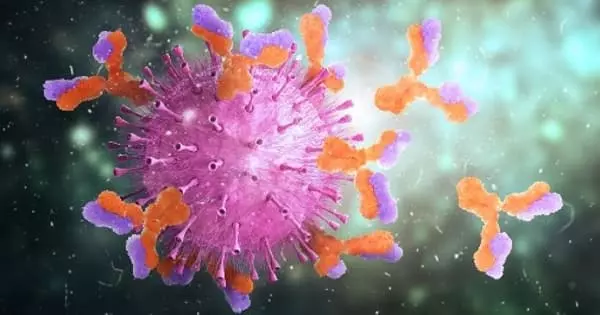New research reveals how our immune cells fight infection by utilizing the body’s fat stores. The findings could aid in the development of new approaches to treating bacterial infections. In addition, the researchers believe their findings could one day aid in the treatment of infections in vulnerable and elderly people.
New research from the University of East Anglia and the Quadram Institute reveals how our immune cells fight infection by utilizing the body’s fat stores. The findings, which were published today in the journal Nature Communications, could aid in the development of new approaches to treating bacterial infections.
Tiny fatty droplets in our cells function as part of our immune system, aiding in the fight against bacterial infections. Until now, it was thought that the droplets were among the most vulnerable parts of the cell. All complex organisms have lipid droplets in their cells. They store essential nutrients such as fats and lipids. Adipocytes, which are specialized cells in humans, store body fat in the form of lipid droplets.
I hope that our findings will help improve treatment for vulnerable and elderly people with infections in the future by strengthening their immune response. Defining these mechanisms will allow us to create new therapeutics to treat liver infections.
Dr. Rushworth
According to the researchers, their findings could one day aid in the treatment of infections in vulnerable and elderly people. The researchers looked into Salmonella, a bacterial infection that causes diarrhea, vomiting, abdominal pain, fever, and sepsis.
To track fatty acid movement and consumption in live stem cells, the UEA team collaborated with the Quadram Institute and colleagues at the Earlham Institute. They then examined liver damage to determine the immune response to Salmonella bacterial infection. They discovered how blood stem cells respond to infection by acquiring high-energy fatty acids from fat stores in the body.

The researchers discovered that infection signals drive adipocytes to release their fat stores as fatty acids into the blood in the bone marrow, where blood stem cells reside. They also discovered that these high-energy fatty acids are taken up by blood stem cells, effectively feeding the stem cells and allowing them to produce millions of Salmonella-fighting white blood cells.
The researchers also identified the mechanism by which the fatty acids are transferred and discussed the potential impact of this new knowledge on future infection treatment.
Dr Stuart Rushworth of the University of East Anglia’s Norwich Medical School stated: “Our findings shed light on how the blood and immune system respond to infection. Fighting infection requires a lot of energy, and fat stores are huge energy reserves that provide fuel for blood stem cells to boost the immune response. Working out the mechanism by which this ‘fuel boost’ works gives us new ideas for future ways to strengthen the body’s fight against infection.”
Quadram Institute’s Dr. Naiara Beraza stated: “Our findings help us understand how our immune system uses fat to fuel the immune response to infection. Defining these mechanisms will allow us to create new therapeutics to treat liver infections.”
Antibodies aid the body in combating microbes and the toxins (poisons) they produce. They accomplish this by recognizing antigens on the surface of the microbe or in the chemicals they produce, which identify the microbe or toxin as foreign. These antigens are then marked for destruction by the antibodies. This attack involves a large number of cells, proteins, and chemicals.
According to Dr. Rushworth: “I hope that our findings will help improve treatment for vulnerable and elderly people with infections in the future by strengthening their immune response. With antibiotic resistance being such a current and widespread issue for society, there is an urgent need to investigate novel methods such as this to assist the body’s immune system in fighting infection” He continued.
















